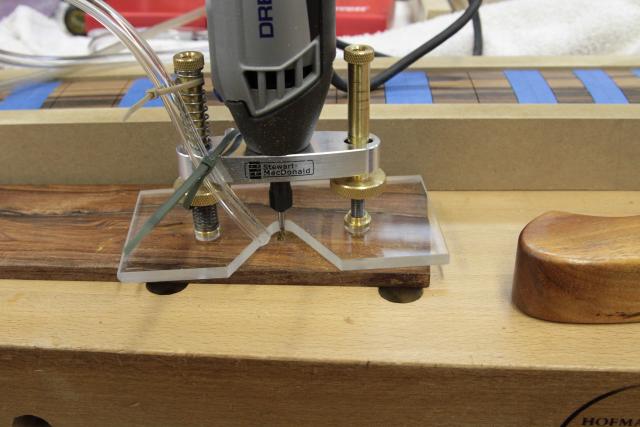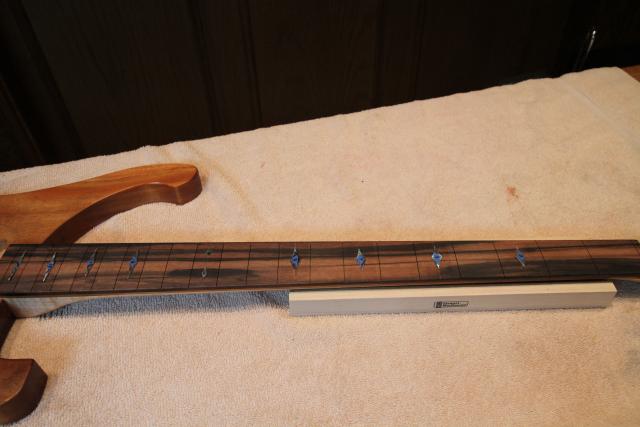The Nextflo looks pretty high tech but I can't justify the cost. What I ended up doing is removing the hose from the air inlet on the base and attached it so it's blowing straight down into the cut. That worked. I can see the lines when I'm routing now.





 Reply With Quote
Reply With Quote




 It's not pretty. I have no idea what to do. The grain colors on the fretboard won't allow an easy sand-CA-sand-CA-sand process without being obvious. I'm thinking I need to sprinkle in sawdust the same color as the adjoining grain then drop in the CA.
It's not pretty. I have no idea what to do. The grain colors on the fretboard won't allow an easy sand-CA-sand-CA-sand process without being obvious. I'm thinking I need to sprinkle in sawdust the same color as the adjoining grain then drop in the CA.
